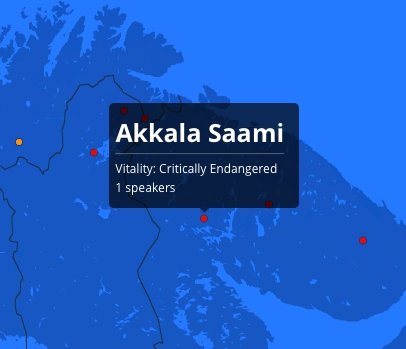Today I’d like to attract your attention to a significant issue: endangered languages. There are about 7 000 languages in the world, but only 20-40 of them are widely spread, meanwhile a hundreds and thousands of languages are spoken by little communities which are about to dissolve in the fast-changing world.
Death of any language is an irrevocable loss for the whole mankind. Each language represents a unique way of thinking, seeing and understanding the world and when we lose it we lose an opportunity to expand our mental borders. Without language diversity our culture in a global scale is going to become poor and limited.
Not so long ago I found an interesting web space dedicated to endangered languages. It is called «The Endangered Languages Project». They gathered a database about 3410 languages and the most enthralling feature of their site is an interactive world map of endangered ones.

There are a number of colored dots on this map. Each dot indicates an area inhabited by community who speaks some endangered language. The color of a dot shows a level of danger for a certain language:
- Green — the language is at risk
- Orange — the language is endangered
- Red — the language is about to fade out
By clicking a dot you get a little pop up window with a basic information about certain language: title, vitality characteristic, an approximate amount of speakers and a link to its profile. Language profile contains an extended information about it, documents in this language, video and audio examples to hear this language spoken. Some of languages listed in this database are on the verge of total extinction.

Akaala saamy language, for example, has only 1 native speaker left!Besides the map there are a lot of useful information for everyone who is interested in saving a language diversity: articles on linguistic topics, tutorials, reviews et cetera… This project is really going to expand your knowledge about cultural variety of our world.
Here is a link to the The Endangered Languages Project: http://www.endangeredlanguages.com
And you can also watch their video presentation: